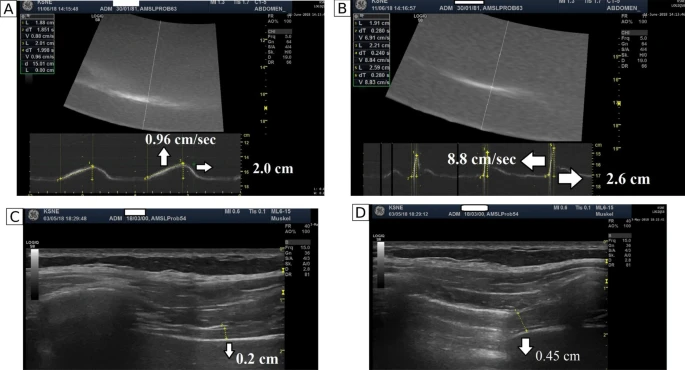 |
Parameters measured during diaphragm ultrasound:
diaphragm excursion during tidal breathing
(A) and sniff maneuver (B);
and diaphragm thickness at functional residual capacity (FRC) (C)
and at total lung capacity (TLC) (D) |
Some COVID-19 patients experience dyspnea without objective impairment of pulmonary or cardiac function. This study determined diaphragm function and its central voluntary activation as a potential correlate with exertional dyspnea after COVID-19 acute respiratory distress syndrome (ARDS) in ten patients and matched controls.
One year post discharge, both pulmonary function tests and echocardiography were normal. However, six patients with persisting dyspnea on exertion showed impaired volitional diaphragm function and control based on ultrasound, magnetic stimulation and balloon catheter-based recordings. Diaphragm dysfunction with impaired voluntary activation can be present 1 year after severe COVID-19 ARDS and may relate to exertional dyspnea.
Download PDF


No comments:
Post a Comment